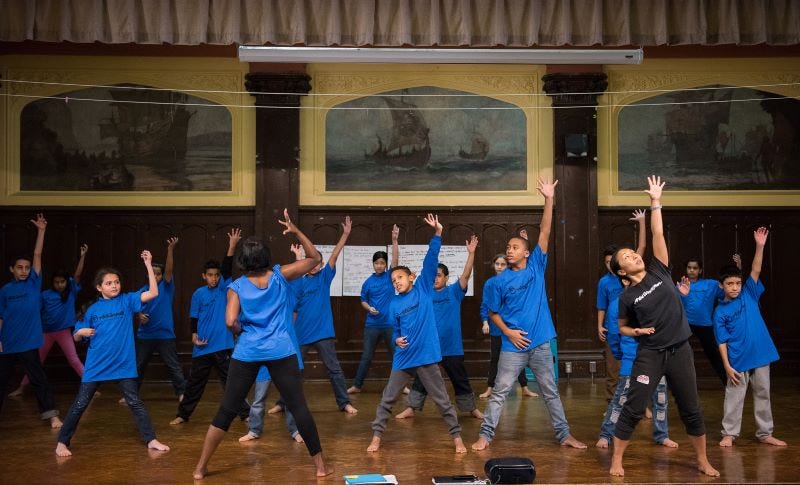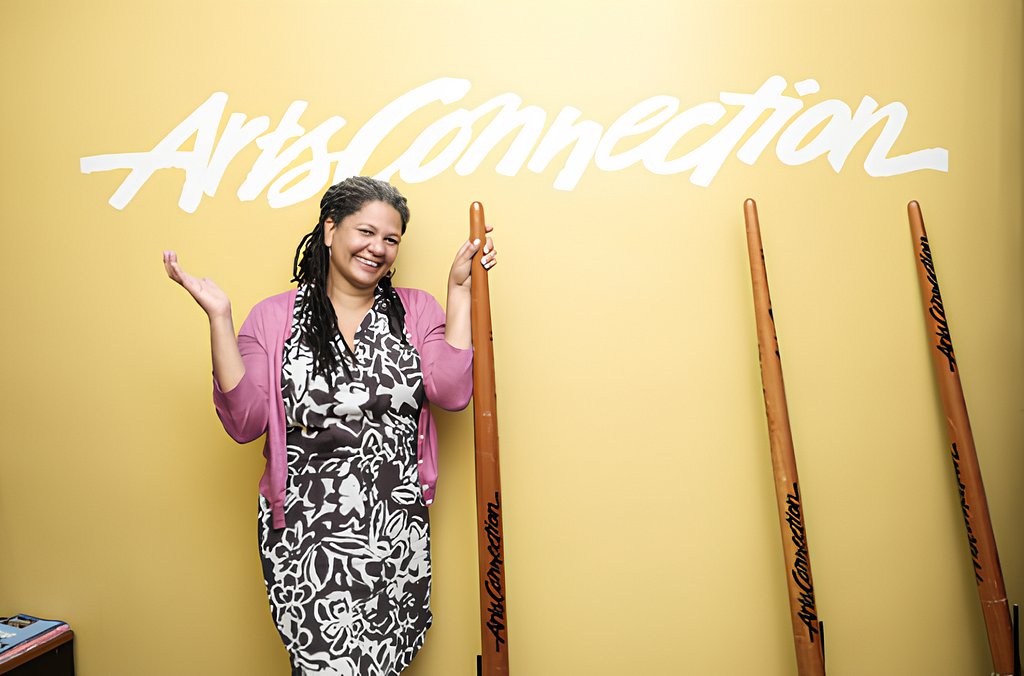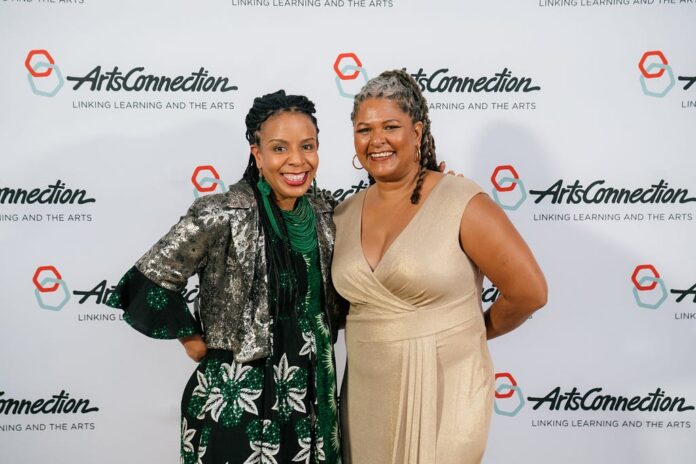An Interview With Cynthia Corsetti
Trust — I believe leading from a place of shared goals and community trust is critical. Everyone must have a shared understanding of what we are trying to do as an organization. If you build trust, the work will follow. This takes time.
Empathy, the ability to understand and share the feelings of another, is increasingly recognized as a pivotal leadership trait. In an ever-evolving business landscape, leaders who exhibit genuine empathy are better equipped to connect, inspire, and drive their teams towards success. But how exactly does empathy shape leadership dynamics? How can it be harnessed to foster stronger relationships, improved decision-making, and a more inclusive work environment? As part of this series, we had the pleasure of interviewing Rachel Watts.
Rachel Watts is the Executive Director of ArtsConnection, the NYC based arts education nonprofit organization celebrating its 45th year anniversary this year. Ms. Watts is the first Black woman to lead the organization. Ms. Watts has over 20 years of experience in arts education and youth development. She has held several leadership positions, including Director of Education at Ballet Hispanico and Director of The MYC Youth Center in San Rafael, California, where she created a state-of-the-art facility focused on developing teen leadership skills through the arts and technology.
Thank you so much for joining us in this interview series. Before we dive into our discussion about empathy, our readers would love to “get to know you” a bit better. Can you share the backstory about what brought you to your career path with us?
I grew up in Trinidad. My mother was an English teacher, but I was not a good student, and I struggled academically. I realized early on in my schooling that adults try to define and control how young people learn, create, and perceive themselves in the world. When I was 9, a teacher divided our class into two groups. It was immediately apparent that one was “smart” and the other “not smart”; the placement affected behavior and learning. It wasn’t until my last two years of secondary school, when I researched and wrote a paper on a subject that I chose — Trinidad’s women artists — that I realized I had a voice and the capacity to think critically.
These formative experiences made me realize that the way we teach can often limit or stifle a young person’s voice, imagination, and creativity. They led to my belief that we must change how we teach and engage young people.
This has been the driving force in my career, where I have worked to create and advocate for meaningful and equitable programming for young people to help them develop leadership skills through the arts.
Rather than telling young people what to do and how to think, we must give them a voice, empower them to figure it out and create space for them to lead. By unleashing, rather than stifling, their imagination and creativity, young people can define the issues and their futures. It is this out-of-the-box thinking that will lead to innovation and change.
Can you share the most exciting story that happened to you since you started your career?
Returning to the early part of my career at ArtsConnection, I transitioned from a program manager to a research associate. My role was to research how our seven program managers facilitated school programming. I figured everyone did it the way I had, but I discovered that each manager had a different style and process. I learned that to be successful, we needed to identify the essentials of the job, define goals, and then allow each individual to make the role their own. Rather than saying you need to do work in a certain way, each person needs to navigate their path to achieve the common goal. This has dramatically impacted my leadership style.
Additionally, when I became ArtsConnection’s executive director in September 2020, it was a unique time in this country and worldwide — a confluence of both a health pandemic and a racial reckoning. Everyone looked at the world and examined the structures that have systematically divided people into groups based on their differences and reinforced inequities. It became imperative that we figure out how to do our work — creating socially just learning environments to strengthen the diverse voices of NYC’s children and youth — and stay true to our mission within a system that has implicitly and explicitly been part of the process of creating inequity.
What do you think makes your company stand out? Can you share a story?
ArtsConnection has a long history and relationship with NYC and its public schools going back 45 years. If you were a NYC public school student and participated in arts education in school, you were in an ArtsConnection program, whether you realized it or not.
The longevity of our work and our multi-generational impact makes us unique. One of our current teaching artists, who has been teaching with us since 2010, participated in ArtsConnection programming starting in 1990 when he was in the fourth, fifth, and sixth grades at PS 55 in the Bronx. He participated in a dance program learning African dance. Years later, he had the opportunity to go to South Africa to teach a two-week ensemble theater program. During one of the breaks, one of his students started drumming. He recognized one of the rhythms he had learned in the ArtsConnection dance program, remembering the song. He is now an actor and director and teaches our ArtsMaking TRaC program, working with high school students. He talks about taking African dance as a Puerto Rican kid growing up in the Bronx, which opened him up to the possibility of art and to the structures for creating positive arts learning environments. It directly connects to his work as a teaching artist today.
We also work in all five boroughs, bringing people from diverse communities and neighborhoods together. We focus on arts education and provide programming across multiple disciplines and grade levels. Last year, we offered programming in 17 art forms.
We are not just a service provider. We work at being a true partner in every one of our schools.
We have dedicated significant time and resources to develop and improve programming by examining the how and the why of what we do so that we continually improve, move forward, and positively impact the young people who participate in our programs, their futures, and the field.
You are a booming business leader. Which three character traits do you think were most instrumental to your success? Please share a story or example for each.
The three character traits instrumental to my success are creativity, building trust, and self-awareness.
Creativity –In creating art, you must be comfortable with ambiguity because it is in the process that you find discoveries that would not have emerged just by following the rules. My ability to lean on and pull from the creative process is critical to figuring out how to do our work. For example, during COVID-19, we needed to figure out how to continue doing our job when the way we worked (in person, in the classroom) no longer existed. Nothing was clear. I helped engage our staff and teaching artists in the creative process to find solutions. We created “think tanks” with the artists to ensure they had work and to figure out how to teach in a reinvented world. We made eleven different groups, ranging from teaching by age group and teaching by art form to teaching students who were English language learners, had disabilities, and had no access to technology and providing wellness practices. Through this process, we built new models that we still use and refined and expanded remote arts-learning opportunities.
Trust — I believe leading from a place of shared goals and community trust is critical. Everyone must have a shared understanding of what we are trying to do as an organization. If you build trust, the work will follow. This takes time.
Self-awareness — As a program manager in my early 20s, I worked with people twice my age. I knew some co-workers would see my youth as a weakness. Knowing this enabled me to turn it into a strength. I asked questions, interacted with everyone, and gathered as much information as possible. As a result, I got people to open up, share their insights, and build a trusting community. When faced with a challenge, please find a way to re-frame from an expansive perspective, for example: not that we can’t teach dance or theater in person anymore, but how can we support movement and theatrical expression when we are not in person? Not that they don’t respect me because I am young, but how can my youth be an asset?
Leadership often entails making difficult choices between two good paths. Can you share a story about a hard decision or choice you had to make as a leader? I’m curious to understand how these challenges have shaped your leadership.
I teach a course on leadership at New School to graduate students in the Arts Management and Entrepreneurship Program. I talk with students about staying in the trap of binary decision-making, which can be limiting. Hard decisions are only sometimes a clear choice between two distinct paths. You need to be creative or expansive to find another solution.
In many organizations, decisions like hiring and personnel are traditionally based on a monetary analysis — how do we save money and make money — often to the detriment of staff members and their needs. If we reframe the issue and think about fairness and humanity rather than the bottom line, we can create change and benefit both staff and the organization. We have tried to do this at ArtsConnection, especially with our teaching artists.
The key is to give ourselves the space to question how we have always done things and stick to our values. That makes it an easier decision.

Ok, thank you for that. Let’s now jump to the primary focus of our interview. Let’s begin with a basic definition so that we all are on the same page. How do you define empathy in a leadership context, and why do you believe it’s vital for leaders to possess in today’s work environment?
Empathy is the ability to listen to others to try to understand and share what they are experiencing. It is so important to have empathy not only in the work environment but also in the classroom. You must get to know who you are working with (including young people in the school and programs) and take time to identify their strengths so that they can lean on those when faced with challenges.
Can you share a personal experience where showing empathy as a leader significantly impacted a situation or relationship in your organization?
Two staff members recently reminded me of something that occurred in 2018 during our annual Artists Institute, where we presented the curriculum for a program. The presentation contained images that several of the people of color in attendance considered troubling and offensive. The presenter and those who had created the curriculum, who were white, did not immediately understand the strong reaction. This led to a particularly fraught situation where emotions ran high. Two staff members let me know what was happening because I was the director of the program at the time, and we were not in the workshop. I came in to facilitate a discussion. They shared with me that I created a space for everyone to voice their concerns, express their feelings, and say what they needed to say. I framed the situation for those who needed help understanding the problems. I led the group through a constructive dialogue, and together, we figured out how to change the curriculum. As one staff member recalled, “In a situation brimming with friction and anger, you were able to diffuse the volatility without shutting anyone down. Ultimately, you demonstrated empathy for those who found the choices troubling and those who made them. Many constructive conversations and changes were made across the organization after that day, and I believe your critical sensitivity and empathy had everything to do with it.”
How do empathetic leaders balance understanding their team’s feelings and making tough decisions that might not be universally popular?
You must start by understanding and accepting that you can’t please everyone.
Considering multiple perspectives when challenges arise is essential — I see this at work and in the classroom. I try to gather as much information as possible before making a decision. When I do this, I see that sometimes my original instinct is not the way to go. If I have considered as many perspectives as possible, I know that the decision, even a tough one, will be informed.
How would you differentiate between empathy and sympathy in leadership? Why is it essential for leaders to distinguish between the two?
Sympathy keeps you at arms’ length from someone. You acknowledge someone’s loss without indeed being drawn in. Empathy involves trust and understanding.
What practical strategies or exercises can leaders employ to cultivate and enhance their empathetic skills?
The willingness to be vulnerable and admit mistakes. Practicing vulnerability is critical to building empathy. Allowing others the space to share their personal stories, even in a work environment, is another way to build empathetic skills.

How can empathy help leaders navigate the complexities of leading diverse teams and ensure inclusivity?
Again, the willingness to be vulnerable, owing others to share their stories, and creating a community of trust helps to navigate these complexities. The trust allows difficult conversations not to be brushed under the carpet but to be named and discussed.
What’s your approach to ensuring that succession planning is a holistic process and not just confined to the top layers of management? How do you communicate this philosophy through the organization?
My approach is inclusive. I don’t accept that only executive staff and administrators should make critical organizational decisions. At ArtsConnection, we practice inclusive decision-making and work on making this part of the organization’s culture. We are listening to our constituents, especially the young people and our teaching artists. We have begun to include them in decision-making in as many areas as possible to ensure their voices are heard. I want their perspectives, ideas, and solutions to shape the organization’s future.
I know that I should only be leading the organization for a while. Since ArtsConnection has such deep roots in NYC’s public schools, it would be excellent for someone from the school system or an alum of our programs to lead the organization in the future or a shared leadership model with a newly dreamed-up structure.
Are there potential pitfalls or challenges associated with being an empathetic leader? How can these be addressed?
Empathy involves trust and understanding. Empathy is part of the community-building process. That is why it is so important in leadership — a good leader must build community and trust. You must engage with discernment as a leader so stay on the issue at hand to not have challenges or pitfalls with your team.
It’s off-topic, but I’m curious. As someone steering the ship, what thoughts or concerns often keep you awake at night? How do those thoughts influence your daily decision-making process?
I want to make sure ArtsConnection maintains various forms of diversity, from race, gender identity, age, education level, first language differences, and disability, and challenges us to consider other perspectives, a key component of empathy. This is a part of my daily thoughts as the Executive Director.
You are a person of great influence. If you could start a movement that would bring the most good to the most people, what would that be? You never know what your idea can trigger. 🙂
I believe in the arts and arts education as vehicles to create community and design solutions. NYC’s cultural institutions and creative industries, like art itself, should reflect the diversity and voices of New Yorkers. Often, they don’t due to the lack of access to and knowledge about opportunities in the cultural sector.
NYC’s cultural institutions and industries must be open and accessible to all. Their future will be determined by bringing young people to the decision-making table and in leadership. Such a future is possible if we can establish a pipeline from the public school system to careers in the arts.
Young people, given the opportunity, can drive change. I envision growing youth-driven programming and mentorship and implementing ideas to ensure we meaningfully and equitably partner with young people in our work. In this way, we can support the development of a new generation of diverse artists, activists, and cultural leaders in NYC.
How can our readers further follow you online?
Sure, visit www.artsconnection.org or follow us on Facebook and Instagram
For me, visit my LinkedIn: https://www.linkedin.com/in/rachel-g-watts/
Thank you for the time you spent sharing these fantastic insights. We wish you only continued success in your great work!
About the Interviewer: Cynthia Corsetti is an esteemed executive coach with over two decades in corporate leadership and 11 years in executive coaching. Author of the upcoming book, “Dark Drivers,” she guides high-performing professionals and Fortune 500 firms to recognize and manage underlying influences affecting their leadership. Beyond individual coaching, Cynthia offers a 6-month executive transition program and partners with organizations to nurture the next wave of leadership excellence.
Rachel Watts Of ArtsConnection: 5 Ways Empathy Will Affect Your Leadership was originally published in Authority Magazine on Medium, where people are continuing the conversation by highlighting and responding to this story.


